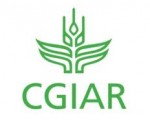The CGIAR Consortium has released its 'Annual Report 2014,' which provides an overview of scientific progress and operations of the CGIAR research centers.
A special feature section focuses on how the CGIAR's work is contributing to improved nutrition and health by improving access to affordable, more nutritious diets.
 29 September 2015: The CGIAR Consortium has released its ‘Annual Report 2014,’ which provides an overview of scientific progress and operations of CGIAR research centers. A special feature section focuses on how the CGIAR’s work is contributing to improved nutrition and health by improving access to affordable, more nutritious diets.
29 September 2015: The CGIAR Consortium has released its ‘Annual Report 2014,’ which provides an overview of scientific progress and operations of CGIAR research centers. A special feature section focuses on how the CGIAR’s work is contributing to improved nutrition and health by improving access to affordable, more nutritious diets.
With regard to operations, the report highlights the development of the new Strategy and Results Framework (SRF), which lays out CGIAR’s future direction, priorities and objectives. The SRF states that, by 2030, the work of CGIAR and its partners will result in 150 million fewer hungry people, 100 million fewer poor people and 190 less hectares of degraded land. The SRF is complemented by a system-wide Resource Mobilization strategy that aligns fundraising efforts with the SRF.
The report also highlights the Mid-term Review of CGIAR Reform, which provided evidence-based recommendations on how to realize the reform’s objectives, namely: implementation of results-oriented research; attracting the best scientists; clarifying accountability; strengthening partnerships within CGIAR and between CGIAR and its partners; and reducing bureaucracy for greater cost effectiveness. Other highlights include the CGIAR Development Dialogues, the founding of the Global Alliance on Climate–Smart Agriculture (GACSA), and contributions to the Global Forum on Agriculture (GFA).
The section on scientific progress provides examples of the impact of CGIAR’s work, including progress in sequencing the genomes of root tuber and banana crop accessions to support breeding programmes, development of varieties that are resistant to environmental stress and pathogens, using information technology to empower farmers, and improving policies and practices to increase impact. The section also contains key statistics on CGIAR’s impacts, such as the number of farmers reached, improved varieties released of different crops and in different regions, and the area of land managed with improved technologies.
The nutrition feature section shows how the different dimensions of CGIAR’s work contributes to improving nutrition and health, including through: achieving nutrition security; developing more nutritious crop varieties and promoting their use; diversifying diets; focusing on gender dimensions; measuring progress; and supporting leadership for change.
Other sections of the document provide an overview of CGIAR’s donors, financial information, and general background information about CGIAR’s history and its work. [Publication: CGIAR Annual Report 2014] [CGIAR Press Release] [CGIAR Strategy and Results Framework 2016-2030] [Final Report of the Mid-Term Review Panel on CGIAR Reform]